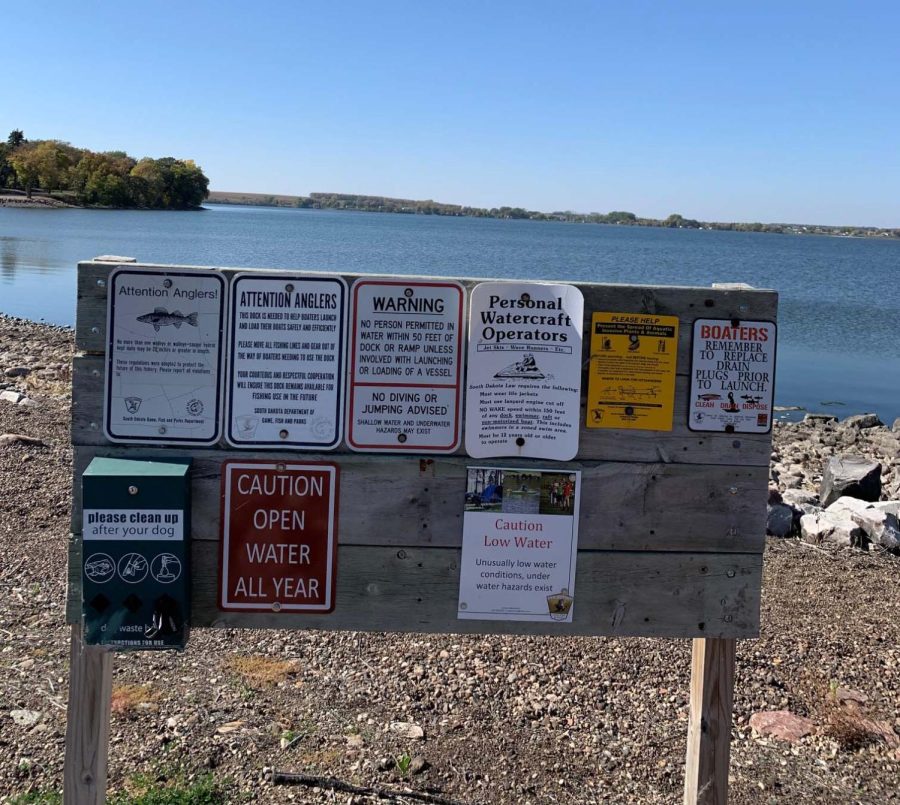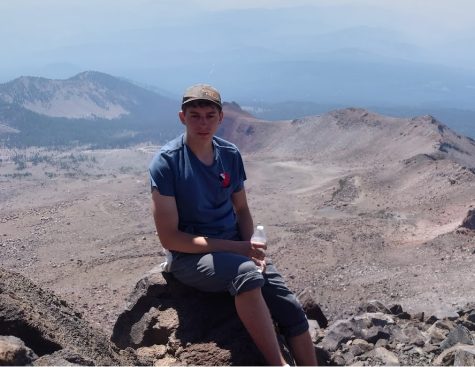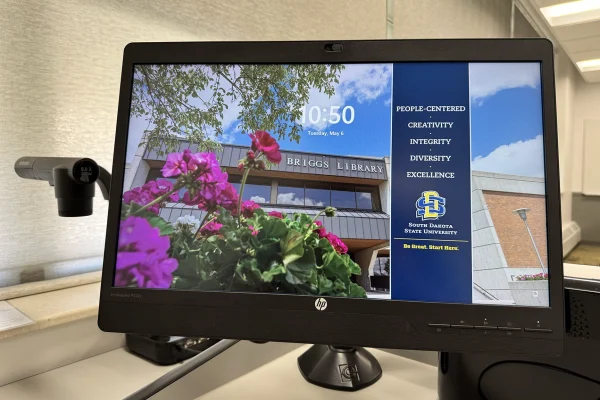Program’s graduates in demand
October 5, 2021
Natural resource law enforcement majors prepare to fill conservation job openings
Across the state, workers are stretched thin as employers flounder through under-employment. The shortage has affected all sectors of the economy: food service, interstate shipping, material production and now even the Game Fish & Parks Department.
With so many openings at such a competitive organization, there has never been a better time to be one of the nearly 70 students pursuing a natural resource law enforcement major from South Dakota State University.
“This was a problem before the pandemic,” Nick Harrington, communications manager at GF&P, said. “Many conservation officers are baby boomers who are retiring. We need new people in the workforce.”
In 2015, SDSU introduced the natural resource law enforcement major, becoming the only university in the state to offer the program and joining only six other universities across the nation in offering the four-year track. It’s not accurate to categorize this major as niche; despite the slim offerings of the programs nationally, the major can lead students to a surprising amount of career paths.
With a natural resource law enforcement major, or “NRLE major” (pronounced “gnarly”) to those familiar with the Department of Natural Resource Management, a graduate is knowledgeable in subjects ranging from conservation biology to criminal justice and is qualified to work in various GF&P positions, as well as any law enforcement position ranging from a conservation officer to highway patrol to city police.
“We have NRLE grads who are biologists, park managers, federal officers, soil conservationists, and who work for cities, counties, states and in the private sector,” NRLE instructor Don McCrea said.
According to the GF&P website, conservation officers, or game wardens as they’re often called, “provide safety and protection to the people of South Dakota while enforcing the laws put in place to conserve the state’s outdoor resources.”
Conservation officers go through the same law enforcement academy and have the same training and credentials as other law enforcement entities across the state. They even go through riot training, Harrington said.
It’s likely that a student pursuing the major will have to travel if he or she is seeking the four-year track. Ball State University offers the program in Muncie, Indiana. The College of Southern Idaho offers one in Twin Falls, as does Mount Mercy University in Cedar Rapids; Unity College in Unity, Maine; Skagit Valley College in Mount Vernon, Washington; and Texas Tech University in Lubbock.
And that’s all.
For NRLE senior Andrew Gaub, that meant moving from his two-year program at Vermillion Community College in Ely, Minnesota, and pursuing the four-year degree at SDSU. Gaub said he knew SDSU had a good program, and with the opportunities in the state, the choice was obvious.
“Two or three years ago, we did not have this,” Gaub said, referring to the number of open positions for NRLE majors in the workforce. “At any level, state or federal, they’re hiring.”
Texas Tech University has offered its natural resource law enforcement major just several years longer than SDSU has, according to Robert Cox, an associate professor at TTU. Similar to SDSU, TTU’s program is the only one offered in the state.
“It’s very competitive to become a game warden in Texas and in many other states as well,” Cox said. ”It’s unlikely for everyone with the degree to become a game warden. Those who don’t are qualified to work for city police departments and as state officers.”
In Texas, applicants aren’t required to have any specific degree—just a bachelor’s degree. Though there are only about 15 to 30 openings for game warden positions per year in Texas, applications routinely soar into the hundreds and even thousands. This overabundance of applicants helped ignite the push to offer the major in Texas, and give the 15 to 20 students enrolled in the program at TTU an advantage over the competition, Cox said.
In order to graduate from TTU with the natural resource law enforcement major, students must first earn a degree in criminal justice from a two-year university elsewhere in the state.
In Brookings, McCrea, with support from department head Michele Dudash, is looking to make SDSU stand out; the law enforcement component is built into the four-year major and is increasingly becoming the focus of the program.
The NRLE program advisory board consists of representatives from GF&P-equivalent agencies from South Dakota, Nebraska, Iowa, Minnesota and the federal government. The board communicates their needs in their respective workforces to McCrea so the program can adapt and better prepare students.
The advisory board asked for the NRLE program to stress proper relations between law enforcement and the community, and that’s exactly what McCrea has been working toward.
“When I took over in 2018, I fired it up right away,” McCrea said. “I made sure I made changes with the advisory board’s input.”
Criminal justice classes have become key components of the major, and law enforcement personnel from South Dakota, Nebraska, Iowa and Minnesota are routinely guests in NRLE lectures.
“What I had to do is instill more law enforcement in the actual program,” McCrea said. “It was to better prepare them for academy experience and also to prepare them for the agency experience and to get hired. The states that have been doing the hiring have noticed and made comments about how the NARLE graduates are displaying higher law enforcement skills and knowledge than prior to the changes.”
Gaub and another SDSU senior in the NRLE program, Carter Knecht, have interned with conservation officers at state agencies in Minnesota and South Dakota. They say the new focus of the major has given them skills that make them stand out to the wardens they’ve worked with.
“That’s what this class is preparing us for. Getting that internship and then going on to get the job,” Knecht said. “That internship is the goal you want to get to.”
The internships with conservation officers are highly coveted positions, according to Gaub and Knecht. They described the unpredictability of the day-to-day work of a conservation officer. Sometimes it’s an eight-hour day, while other times it’s a 20-hour day.
At Gaub’s internship in east metro Minnesota, he and a supervisor even had to write up a man for drug paraphernalia after running into him near the Mississippi River.
“I had to give a presentation on what I did,” Knecht said. “I had a couple key points. One of them was don’t leave home with less than half a tank of gas because you never know what’s going to come in over the radio. Another is that a situation can escalate very quickly—you never know who’s going to escalate it and why.”
A lot of NRLE majors have known what they’ve wanted to do for a while, McCrea said. For Gaub and Knecht, it’s been a magnetic draw since childhood.
When Knecht was six years old, he went on a fishing trip in Pierre with his dad. They were soon approached by a game warden.
“He talked to us about how glad he was we were following the rules and wearing a life jacket,” Knecht said. “I looked up at him like he was about eight feet tall. That’s when I knew.”
That’s an example of the valuable community relations McCrea tries to instill into students.
“You have to be careful how you dispel justice,” McCrea said. “We have lowering numbers of people fishing. You don’t get paid based on the number of tickets or arrests you made. You get paid based on how well you do the main job overall.”
Gaub agrees that the focus of the job is not writing citations.
“The dad might be breaking a law, but if you give the dad two tickets, the dad might not take the kid fishing again,” Gaub said.
When they graduate this year, Gaub and Knecht will set out into the job market. With about 70 students in the major, there’s going to be competition for positions, but McCrea maintains that NARLE students are highly qualified and will have no problem finding work in natural resource management or law enforcement.
Nebraska, Iowa, Minnesota, South Dakota and even the federal government all have record numbers of openings.
“There’s 50 state agencies, but not just game and fish,” McCrea said. “They have state and county rangers. They have federal park rangers and park wardens. NRLE can work with the forest and park services and BLM. It’s like Horace Greely said years ago: go west, young man.”
But even with opportunities elsewhere, McCrea said many NRLE students end up captivated by the natural resource offerings in South Dakota and would rather stay in-state.
“We have students from Indiana, Illinois, New York, New Jersey, Arkansas. Here’s the bottom line: when they come here, they love South Dakota—the hunting and fishing and resources here,” McCrea said. “The air is clean. They have no intention of coming home. They want to graduate from SDSU and stay in South Dakota.”























